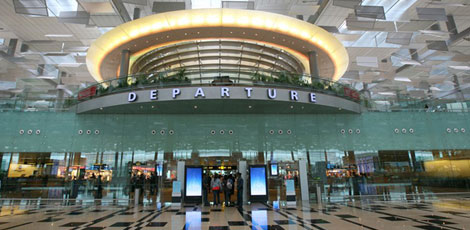Why even the biggest airports need to innovate
09 / 08 / 2013

LEADING airports have identified innovation as a key tool to cope with the global air cargo downturn. Increasingly, these efforts are reaching beyond the airport perimeter.
In July, work kicked off on a new cargo complex for Emirates SkyCargo at Dubai World Central’s Al Maktoum airport. Scheduled for completion in May of next year, the new facility will become the home base for Emirates’ freighter operations, which currently stands at eight B777Fs and two B747-400ER cargo aircraft.
Since the start of operations at Al Maktoum in April 2011, growth has been stellar. For 2012, the airport clocked up a 144 per cent increase in throughput to 219,092 tonnes.
New developments like the migration of Air France-KLM’s all-cargo flights from Dubai International in August will bolster airfreight traffic there, but the biggest factor will be Emirates’ freighter operation.
New developments like the migration of Air France-KLM’s all-cargo flights from Dubai International in August will bolster airfreight traffic there, but the biggest factor will be Emirates’ freighter operation.
The airline’s new terminal, which will feature 12 aircraft stands and 46 truck docks, will have an initial capacity of 700,000 tonnes. On top of the additional space, Emirates will have more room for perishables and a dedicated area for pharmaceuticals.
Arguably, more significant than any of its special features is the fact that the terminal is being built at all. Emirates’ passenger fleet remains at Dubai International Airport.
The notion of a split cargo operation had raised serious questions on the viability of a freighter base at Al Maktoum, so the decision to go ahead is an affirmation that management is confident it can attain seamless flows between the two locations to ensure sufficiently fast transits between belly and maindeck networks.
The notion of a split cargo operation had raised serious questions on the viability of a freighter base at Al Maktoum, so the decision to go ahead is an affirmation that management is confident it can attain seamless flows between the two locations to ensure sufficiently fast transits between belly and maindeck networks.
Similarly, Cathay Pacific’s new cargo base at Hong Kong International Airport, which opened its first phase in February, has all the airline’s cargo under one roof, but transit times were also a key criterion in the development of the new facility.
According to Algernon Yau, chief executive of Cathay Pacific Services, which manages the development, one of the objectives set for the new terminal was a reduction in cargo connection time from eight to five hours, and subsequently to three hours.In addition, Cathay wants to halve cut-off times for exports from four to two hours.
Read Ian Putzger’s full World Airport Review in the next edition of Air Cargo News 12 August 2013 – Issue No. 758
According to Algernon Yau, chief executive of Cathay Pacific Services, which manages the development, one of the objectives set for the new terminal was a reduction in cargo connection time from eight to five hours, and subsequently to three hours.In addition, Cathay wants to halve cut-off times for exports from four to two hours.
Read Ian Putzger’s full World Airport Review in the next edition of Air Cargo News 12 August 2013 – Issue No. 758














